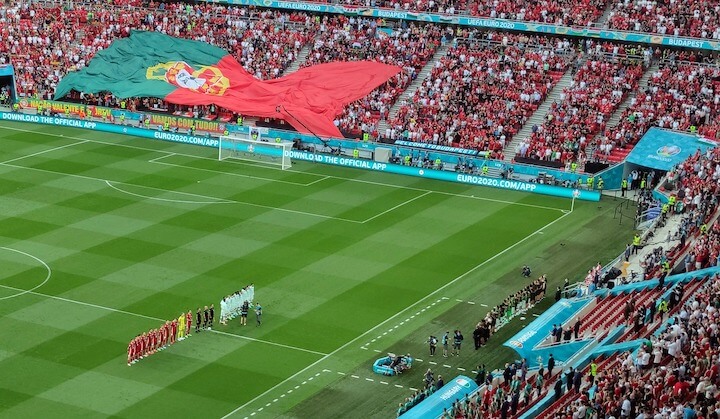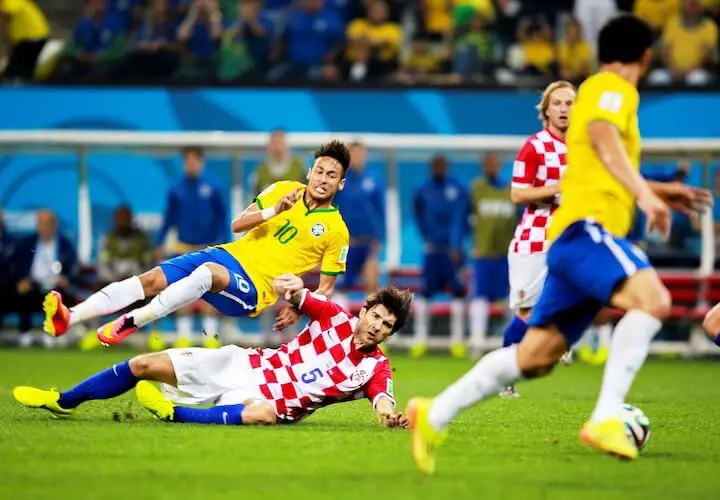What is a Cap in Soccer (Full Explanation and Records)
You've probably heard the word “cap” used many times.
But what exactly is a cap in soccer?
Even without explanation, context provides some meaning to the word.
This is why, even for the most seasoned soccer fans, it can be hard to give a proper definition
Let's take a closer look at what a “cap” is, its significance, the history behind the coining of the term, and a list of the most capped players in soccer history.
What Is A "Cap" in Soccer?
Put simply, a “cap” is when an international soccer player makes an appearance for the national team.
For instance, if a player makes 10 appearances for their national team, then they have 10 caps.
These “appearances” are only considered if the player actually plays in the game.
It's possible to get a call-up to the squad, and even be on the bench but not get a cap.
It seems simple enough, but it can get tricky when you take into consideration the fact that some players play for different national teams during their careers.
A Brief History of The Cap
The first-ever officially recognized international match was played between England and Scotland on November 30th, 1872.
At the time, it was standard practice for soccer teams to wear headgear, and both teams did on that day.
The Scottish players wore cowls (a type of hooded top) and the English players wore various school caps.
(it was not known at the time, but that would set the tone for the way people use the word today)
Four years after that game, a member of the Football Association in England made the proposal for the "international cap."
The suggestion was that each time a player turned out for the country, they should wear a white silk cap with an embroidered rose (national flower of England).
Since then, players that make an appearance for the country were given a cap to mark the occasion.
The practice of giving out a cap was not adopted by many, but the term “cap” was.
That period birthed the widely accepted term represent the number of appearances that a player has made for their country at any given time.

Why Are Caps So Highly Regarded?
When a player makes 50+ total appearances for their country, it's a significant feat.
The same player could make 50+ appearances on club duty within a season and no one would bat an eyelid.
The reason for this is simple:
It's much harder to get on a spot on an international squad that it is in a club squad.
This is so considering two things:
(1) There only a handful of international appearances played each year
(2) There is a significantly wider pool of players to choose from
Not to mention the fact that many simply consider it an honour to represent their nation -- an act of “patriotism”, so to speak.
Getting Capped For Different Countries
It is possible for a player to have international caps for more than one country.
This is because the rules allow players to switch national allegiance as long as they meet specific terms.
Originally, they can only switch if their international appearance for their current country was not in a competitive, senior-level game.
This allowed players like Diego Costa (Brazil to Spain), Kevin-Prince Boateng (Germany to Ghana), and Nacer Chadli (Morocco to Belgium) to get international caps for multiple countries.
However, there was a big change in eligibility following a modification of the rules in September 2020.
Players are now allowed to switch allegiance even after appearing in a competitive game, as long as they meet other requirements:
- The player must have held the nationality of their new association at the time of their first cap for their first national team.
- The player did not play more than three competitive senior games before the age of 21.
- The player did not play in the final stage of an official tournament (e.g the World Cup, Copa America, European Championships, etc.
- The player’s last game for the previous national team is at least three years before the attempted switch.
There is an exception for the first condition if the player’s international appearance/s came before they reached the age of 21.
Another exception is for players who last played for their old national team before September 18, 2020.
The day that the new rules were introduced.
Finally, a player will may switch allegiance despite holding a competitive cap if they lose their nationality against their will.

Most Capped Soccer Player In History
Men:
Rank | Name | Country | Caps |
|---|---|---|---|
1 | Soh Chin Ann | Malaysia | 219 |
2 | Bader Al-Mutawa | Kuwait | 185 |
3 | Ahmed Hassan | Egypt | 184 |
4 | Ahmed Mubarak | Oman | 182 |
5 | Sergio Ramos | Spain | 180 |
6 | Cristiano Ronaldo | Portugal | 179 |
7 | Mohamed Al-Deayea | Saudi Arabia | 178 |
8 | Claudio Suárez | Mexico | 178 |
9 | Gianluigi Buffon | Italy | 176 |
10 | Hossam Hassan | Egypt | 176 |
Women:
Rank | Name | Country | Caps |
|---|---|---|---|
1 | Kristine Lilly | USA | 354 |
2 | Carli Lloyd | USA | 312 |
3 | Christie Pearce | USA | 311 |
4 | Christine Sinclair | Canada | 304 |
5 | Mia Hamm | USA | 276 |
6 | Julie Foudy | USA | 274 |
7 | Abby Wambach | USA | 255 |
8 | Joy Fawcett | USA | 241 |
9 | Heather O’Reilly | USA | 231 |
10 | Caroline Seger | Sweden | 221 |
Conclusion
Hopefully, you’re now a lot more versed with the idea of a “cap” and what it means in international soccer.
We should mention though, that the word is also used in other ways, even within soccer.
For instance, one may use the term when speaking about salary caps, but that’s a story for another article!

